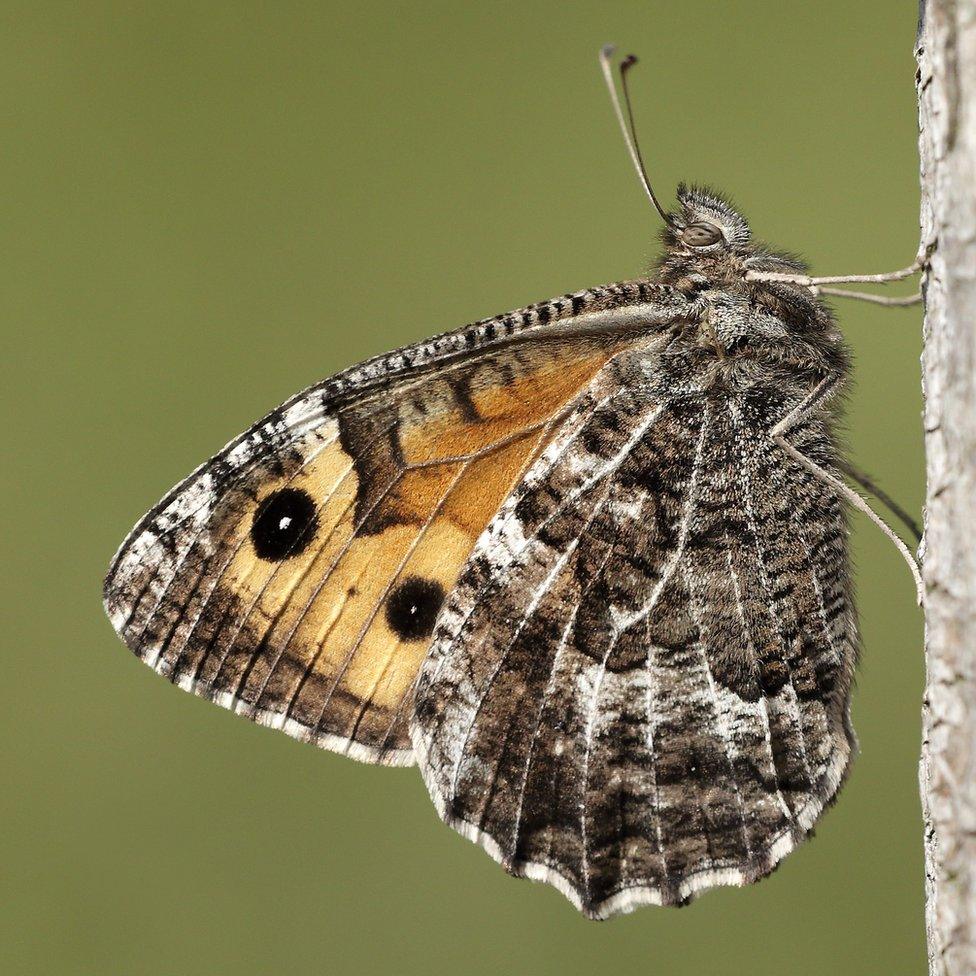Small pearl-bordered fritillary butterfly numbers boost
- Published

The small pearl-bordered fritilary saw its number more than double last year
As scientists record one of the worst years on record for British butterflies, one species is bucking the trend in Scotland.
The annual UK Butterfly Monitoring Scheme found that the populations of 40 out of 57 species declined in 2016.
But the small pearl-bordered fritillary, external thrived. The butterfly, which is commonly found in Scotland and Wales, saw its numbers more than double.
Experts believe it benefitted from a warm start to the summer.
Volunteers taking part in the monitoring scheme recorded a 109% increase in its numbers in Scotland between 2015 and 2016.
Prof Tom Brereton, head of monitoring at Butterfly Conservation, said the small pearl-bordered fritillary usually flies in June and July in Scotland.
He added: "Over that period the weather wasn't too bad, it was warmer than average and a bit sunnier - good conditions for them to emerge and fly and get through the season."
Prof Brereton also pointed to the success of the northern brown argus, which saw a population increase of 38% in Scotland. That butterfly is also active in June and July.
They were two of few success stories uncovered by the scientists however, who blamed the mild winter and cool spring for an overall decline in butterfly numbers.

Volunteers involved in the monitoring scheme recorded a drop in the number of Grayling butterflies
Mild winters can lead to increased disease, predation or disruption of overwintering behaviour, while cold springs can lead to shortened life spans.
In Scotland, they found that the number of Grayling butterflies had dropped by 61% on the previous year.
They also recorded a long-term decline in the abundance of large white butterflies - their numbers have fallen by 75% over the last decade.
And the pearl-bordered fritillary - which emerges a couple of months earlier than the small pearl-bordered fritillary - saw its population tumble by 54%.
Across the UK, scientists said butterflies suffered their fourth worst year on record last year.
Prof Brereton, said: "Worryingly, not even the pleasant summer weather of 2016 was enough to help butterflies bounce back from a run of poor years.
"The results show that butterflies are failing to cope with our changing climate and how we manage the environment. As butterflies are regarded as good indicators of environmental health this is hugely concerning for both wildlife and people."

The number of large white butterflies has dropped by 75% over the last decade
The monitoring scheme is led by Butterfly Conservation, the Centre for Ecology & Hydrology (CEH), British Trust for Ornithology (BTO) and Joint Nature Conservation Committee (JNCC).
It involves thousands of volunteers collecting data throughout the summer at more than 2,000 sites across the UK.
Environment Secretary Roseanna Cunningham commented: "Bad weather and a poor start to the year made 2016 a tough 12 months for Scotland's butterfly population. These difficulties can be clearly seen across the UK with some species reporting a decline to their lowest levels."
She said butterfly numbers were indicators of a healthy environment - and land managers could apply for funding to support butterflies through the Agri-Environment Climate Scheme (AECS).
"We also expect Scotland to participate in the three year UK Pollinator Monitoring Scheme which will increase the monitoring and our understanding of butterflies," she added.